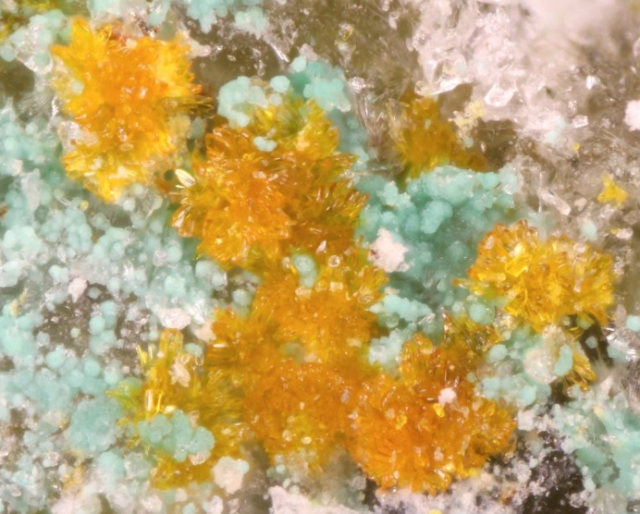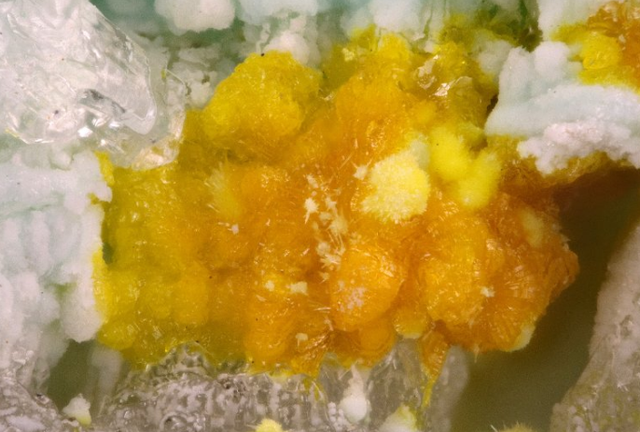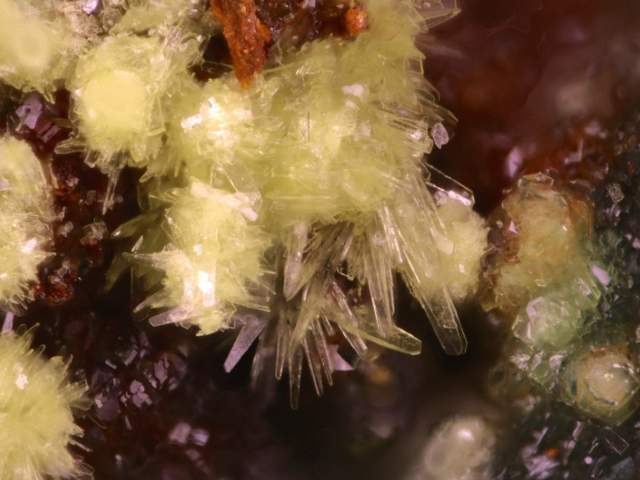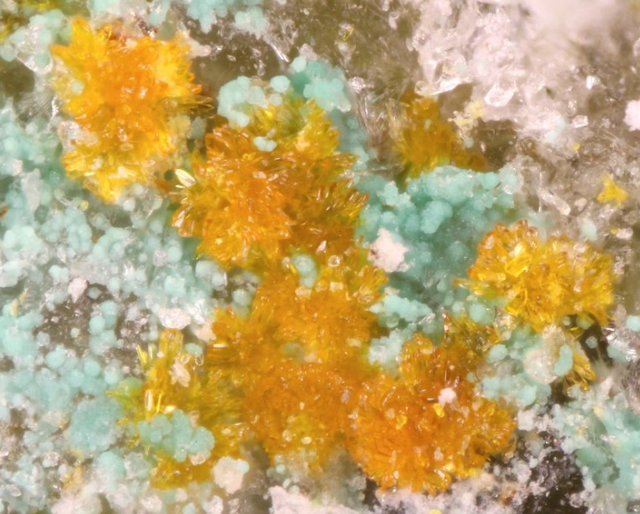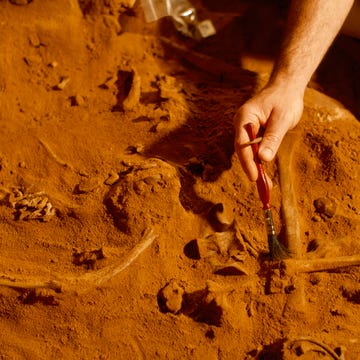A Notre Dame graduate student recently found three new minerals while exploring old uranium mines in Utah. The three new minerals, leesite, leószilárdite and redcanyonite, are all new compounds of uranium and other components, allowing researchers to study how different forms of uranium can propagate in the natural environment.
During the height of the Cold War in the early 1950's, uranium mining become a boom industry for Utah. Salt Lake City was known as the "Wall Street of Uranium Stocks," and the state's then-notoriously lax financial securities laws allowed for exploration companies to explode in the town while many never produced a single ounce of uranium.
Uranium mining in Utah dried up in the mid-70's, but the mines persist, providing the necessary conditions for these three new minerals to form. "Have you ever seen The Hills Have Eyes? It's that kind of creepy, barren desert landscape," says Travis Olds, the graduate student at Notre Dame studying uranyl mineral compounds.
Leesite, one of the minerals Olds has found, is like uranium rust. It appears as tiny, bright yellow blades or needles. On an atomic level, leesite piles up in stacks of uranium and oxide layers, and its composition includes potassium, distinguishing it as an entirely new mineral.
Leószilárdite is a pale yellow. "If you look at leószilárdite in a picture, you can kind of pick out that they have an unusual shape," Olds says. "But put them under the SEM (scanning electron microscope) and it's obvious." The mineral is formed when uranium ore interacts with oxygen, so there's a solid chance that the uranium mining industries only increased the amount of leószilárdite that exists in the world.
It's more common than the third mineral discovered, redcanyonite, which is believed to be the rarest of minerals that Olds found. What makes it so scarce is all the specific requirements for growth. Access to manganese ions is necessary, and redcanyonite can only form in organic-rich layers that produce ammonium.
"The only way to better understand the chemistry of uranium is to go out and find new minerals—and describe their topology, their structures," Olds says. "They teach us a lot about how uranium can then be moved in the environment."
Source: Michigan Tech
David Grossman is a staff writer for PopularMechanics.com. He's previously written for The Verge, Rolling Stone, The New Republic and several other publications. He's based out of Brooklyn.
